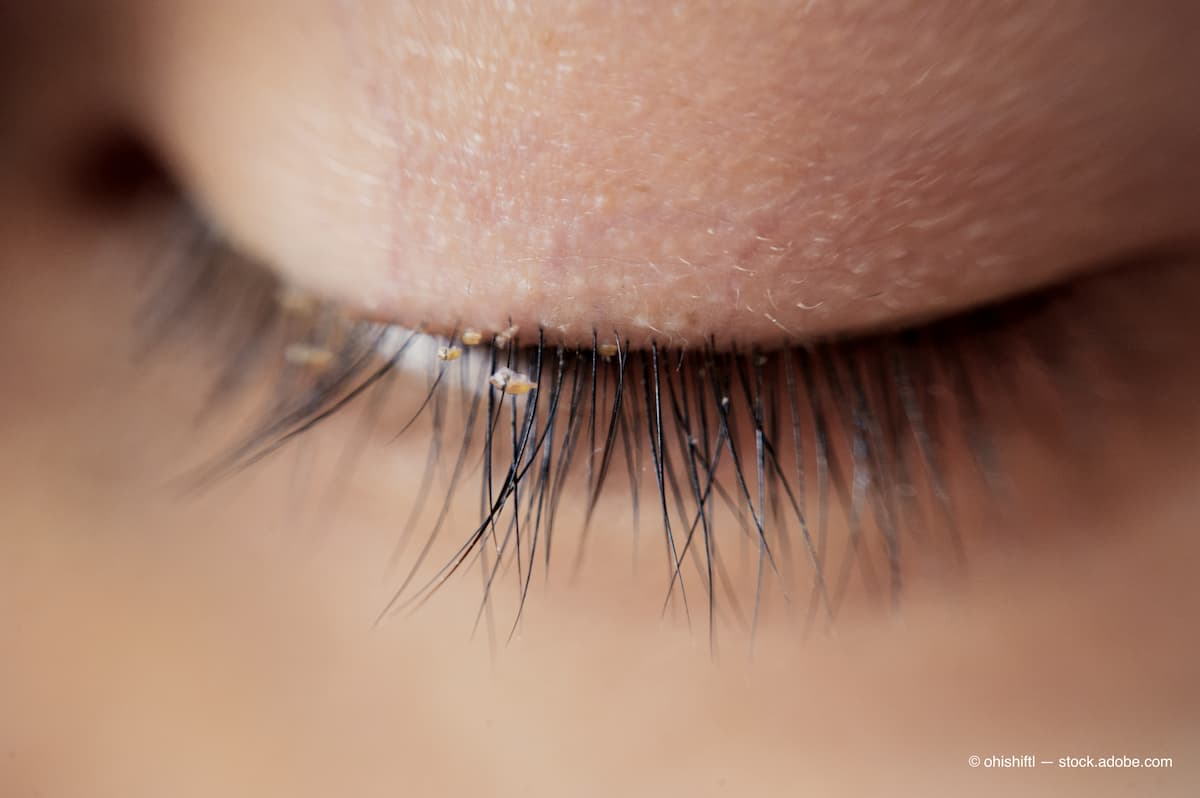Safety, efficacy of lotilaner ophthalmic solution for Demodex blepharitis treatment
Though there is no current FDA-approved treatment, lotilaner ophthalmic solution, 0.25%, is the first drug designed to treat and target the underlying cause of Demodex blepharitis.
Demodex mites are the most common ectoparasite found on the human skin, and these parasites are associated with dermatologic and ocular diseases including blepharitis. There currently is no FDA-approved treatment for this condition. (Image credit: Adobe Stock/ohishiftl)

Elizabeth Yeu, MD, from Virginia Eye Consultants, Norfolk, VA, and colleagues reported the safety and efficacy of lotilaner ophthalmic solution, 0.25% (TP-03, Tarsus Pharmaceuticals Inc.) for treating Demodex blepharitis.1
Demodex mites are the most common ectoparasite found on the human skin, and these parasites are associated with dermatologic and ocular diseases including blepharitis. There currently is no FDA-approved treatment for this condition, she explained.
The Saturn-1 phase 2b/3 study is a prospective, randomized, controlled, double-masked clinical trial that evaluated the safety and effectiveness of lotilaner ophthalmic solution to treat Demodex blepharitis.
A total of 421 patients were included in the study and they were randomly assigned to active treatment or vehicle. Both eyes of each patient were treated twice daily for 43 days. The participants were examined at 4 time points: days 8, 15, 22, and 43 after the start of treatment.
The primary outcome was the degree of cure, ie, complete (collarette grade 0), clinically meaningful collarette cure (grade 0 or 1), mite eradication (0 mites on the lashes), erythema cure (grade 0), and composite cure (grade 0 for collarettes/erythema). The investigators also evaluated the patient comfort with the drops and adverse events. Collarettes, defined as cylindrical dandruff, are the pathognomonic sign of Demodex blepharitis.
Lotilaner ophthalmic solution results
At the end of the study, on day 43, instillation of lotilaner achieved the following results compared with the controls: significantly higher clinically meaningful collarette cure (81.3% vs. 23.0%), complete collarette cure (44.0% vs. 7.4%), mite eradication (67.9% vs. 17.6%), erythema cure (19.1% vs. 6.9%), and composite cure (13.9% vs. 1.0%) (P< 0.0001 for all comparisons).
The drops were considered to be “neutral to very comfortable” by about 92% of patients. Pain at the instillation site was the most common complaint reported and all ocular adverse events were mild.
The investigators concluded, “Lotilaner ophthalmic solution, 0.25%, is the first drug designed to treat and target the underlying cause of Demodex blepharitis. The results of this pivotal study demonstrate that twice-daily use of lotilaner ophthalmic solution, 0.25%, for 43 days is safe and effective for the treatment of Demodex blepharitis compared with the vehicle control. The resolution of Demodex blepharitis, a disease that currently has no FDA-approved treatments, is very promising.”
Reference
1. Yeu E, Wirta DL, Karpecki P, et al. Lotilaner ophthalmic solution, 0.25%, for the treatment of Demodex Blepharitis: results of a prospective, randomized, vehicle-controlled, double-masked, pivotal trial (Saturn-1). Cornea. 2023;42: 435-43; DOI: 10.1097/ICO.0000000000003097
Newsletter
Want more insights like this? Subscribe to Optometry Times and get clinical pearls and practice tips delivered straight to your inbox.